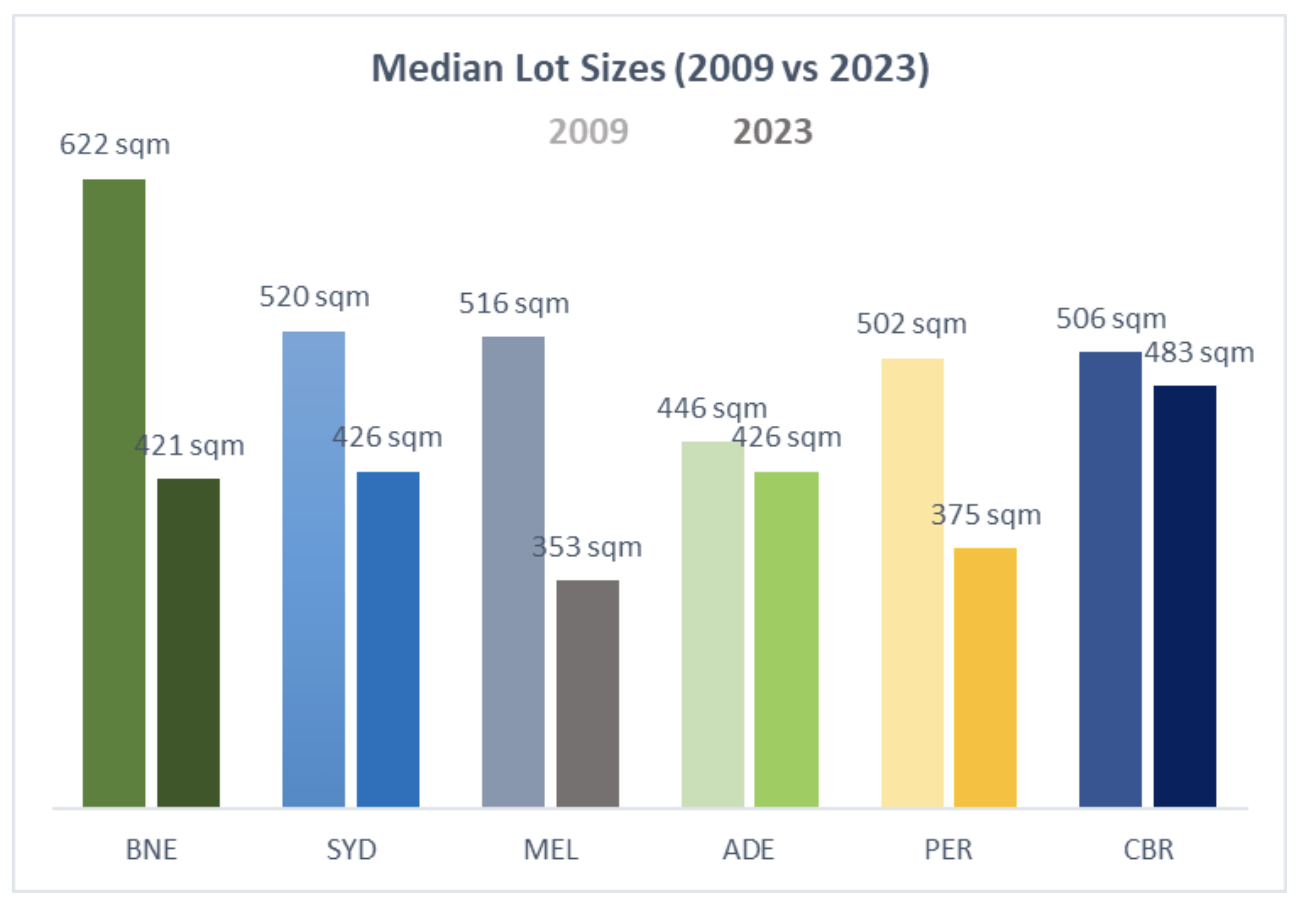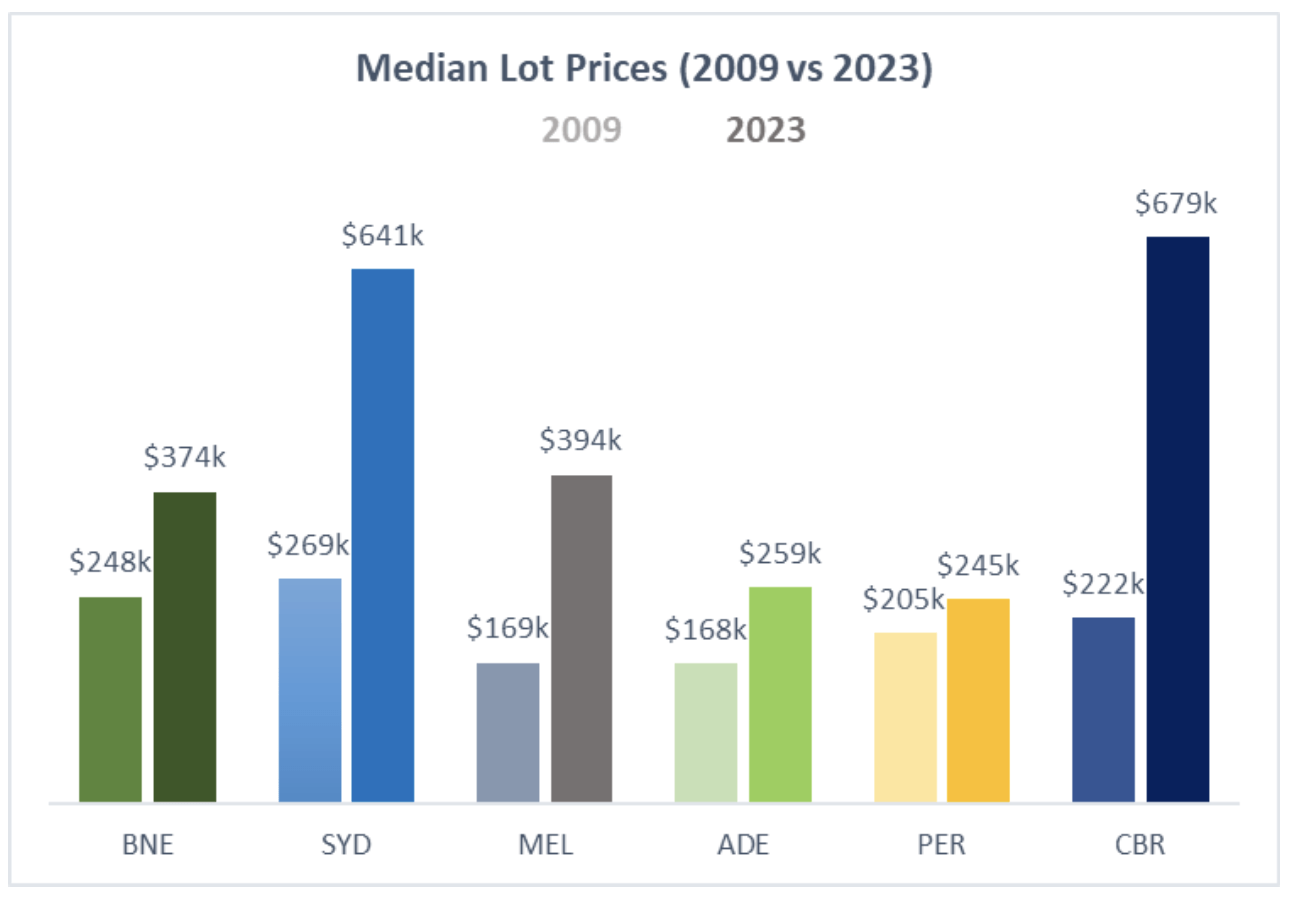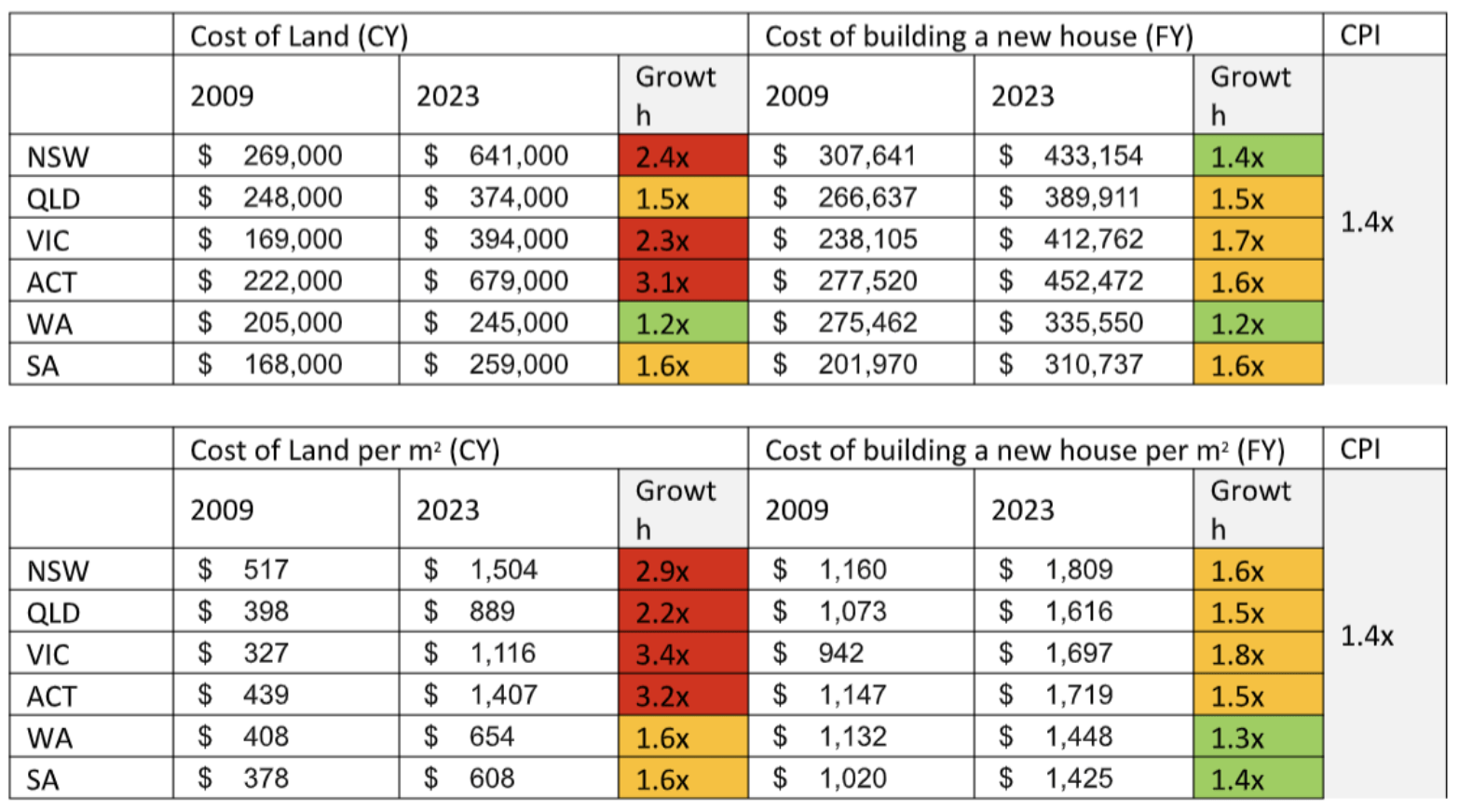Analysis of the Australian Bureau of Statistics and Urban Development Institute of Australia data suggests that Australia’s shrinking land lot sizes may not be helping housing affordability.
In the past couple of decades in Australia, despite average lot size for new homes in all states shrinking, property values have outpaced household incomes, contributing to the current housing affordability crisis.
The predominant driver of soaring property prices has been the cost of land running well ahead of inflation, with the only exception being Western Australia. The average Australian new home lot size has fallen markedly over the past decade in every capital city throughout this period of price growth, making the land price increases even more pronounced on a per square metre basis.

Lot size reduction has been most pronounced in Victoria and Queensland over the past 14 years, where in Queensland, lot sizes went from a median of 622 square metres to about 421 square metres, and in Victoria from 516 square metres to 353 square metres in the same period, both recording a 32 per cent drop over that time.

Together with decreasing lot sizes, unsurprisingly, NSW is the most expensive per square metre of land, ending 2023 at $1,504/sqm, which is more than three times the price from 14 years ago. Victoria and the ACT also recorded a tripling in per square metre lot prices over that period. On the other hand, South Australia recorded the lowest rate of $608/sqm in 2023, with Western Australia not far off with $654/sqm.
The median land lot price in many states has more than doubled since 2009. This has been most pronounced in the ACT where a median block of land cost $222,000 in 2009 and has jumped up to $679,000 in 2023.
Concurrent with the reduction in lot sizes, home buyers have displayed a reluctance to reduce their house floor areas, with new house sizes remaining largely steady over the past 14 years, while the price of a new house has increase at or above inflation in all states other than Western Australia.
Data from engineering group Arcadis shows that building costs are expected to increase by 28 per cent in Perth, 34.1 per cent in Melbourne, and upwards of 39 per cent in Sydney between 2023 and 2028, while Brisbane is tipped to see costs rise 34.4 per cent after registering the strongest growth this year amid above-inflation wage increases.
While all states have witnessed growth in the cost of land and building, it is clear that the predominant driver is land prices and the inability of shrinking land sizes to reverse this trend. In fact, the cost of land has grown faster than building costs of new houses in NSW, Queensland, the ACT and Victoria.
With the recent cost increase pressures in construction prices, new home buyers may be forced to adjust the size of their new homes downward, otherwise the affordability crisis we face now will only continue, and perhaps even worsen.
So, what’s the solution?
The bottom line is Australians must compromise on the size of their new houses. To do this we need:
- To become comfortable with the idea of decreasing the size of our houses, not only our block sizes.
- Local government authorities to consider using planning rules to encourage smaller house sizes, including subsidies for smaller lots and for developers who are building at higher densities. Regulations could be eased to allow modular homes to be manufactured more cheaply overseas, to save on construction costs and build time.
- New construction methods and designs – like prefabricated and modular, combined with better utilisation of building spaces, could encourage people to share living spaces and facilities like bathrooms. Although modular construction hasn’t taken off or proven to be a cost saving yet, it seems logical that houses should be able to use more standardised designs in the future.
- Existing initiatives across Australia to be applied to modular housing. For example, the NSW government’s pattern book accelerates the approval process for new developments by providing a number of endorsed building designs for low-rise housing and mid-rise apartments.
If Australians continue their love affair with the super-sized four by two home, with an obligatory theatre room, our affordability crisis will continue. It’s time we realise that when it comes to our homes, bigger is not necessarily better.

Peter Packer is the co-founding director of Dorado Property.









You are not authorised to post comments.
Comments will undergo moderation before they get published.